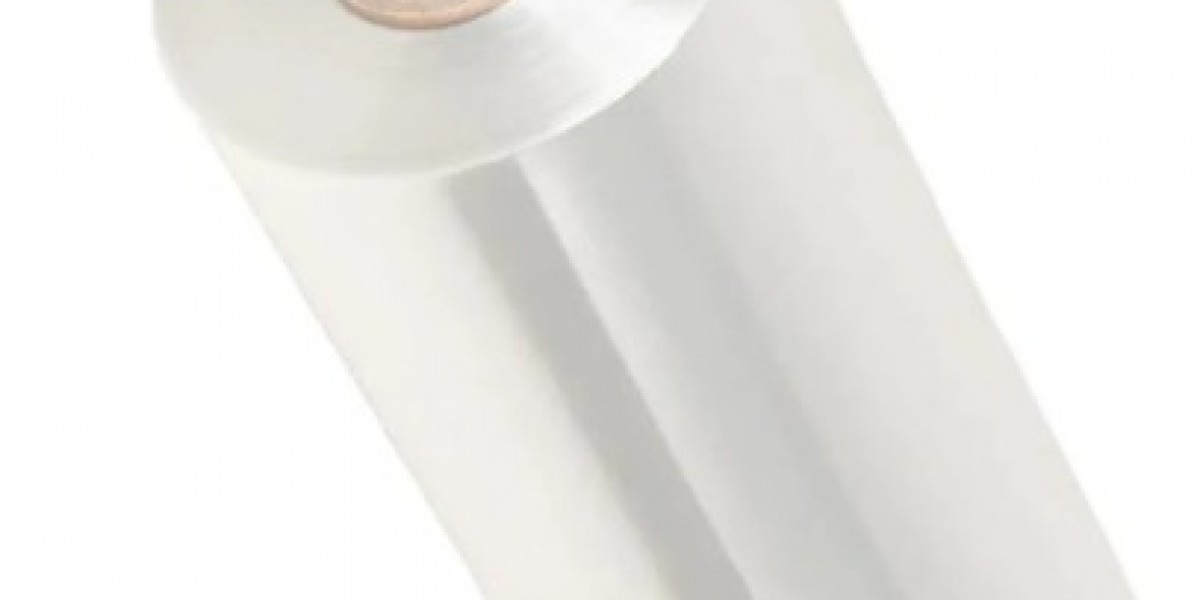Shrink films are a key element in the packaging industry, offering a versatile and effective way to secure, protect, and present products. These films are designed to shrink tightly around items when exposed to heat, providing a secure seal and a polished look. Shrink films are widely used across various industries, including food, retail, pharmaceuticals, and more. Understanding the different types of shrink films and their applications can help businesses choose the right packaging solution for their needs.
Types of Shrink Films
There are several types of shrink films, each with unique characteristics and benefits. The most commonly used shrink films are:
1. Polyolefin Shrink Film (POF)
Polyolefin shrink film is one of the most popular choices in the packaging industry due to its combination of strength, clarity, and flexibility. It is made from synthetic polymers and is suitable for packaging a wide range of products, including food, cosmetics, electronics, and industrial items. POF shrink film is known for its high clarity, making it an ideal choice for products that require visual appeal and consumer visibility.
In addition to its clarity, POF shrink film is durable and resistant to punctures and tears. It provides excellent protection against environmental factors like dust, moisture, and dirt, which makes it ideal for both retail and transport packaging. POF films are also safe for food packaging and are often recyclable, making them an environmentally friendly option.
2. Polyvinyl Chloride Shrink Film (PVC)
Polyvinyl chloride (PVC) shrink film is another widely used option in packaging. PVC shrink film is known for its excellent shrinkage characteristics and is typically used for packaging smaller items or for bundling products together. It is particularly common in industries like food and beverage packaging, as well as for wrapping products such as toys, stationery, and DVDs.
While PVC shrink film provides good clarity and shrinkage properties, it is less durable than polyolefin and can be prone to cracking in cold environments. It also has limited resistance to punctures and may not be as eco-friendly as other shrink films. Despite these drawbacks, its affordability and effectiveness make it a popular choice for many businesses.
3. Polyethylene Shrink Film (PE)
Polyethylene shrink film is a flexible and cost-effective option used for bundling and wrapping a wide range of products. It is commonly used in the packaging of bulk items such as cans, bottles, and large industrial goods. While polyethylene shrink film is not as transparent as POF or PVC films, it offers excellent stretchability and strength, making it ideal for larger, heavier items.
Polyethylene shrink film is also highly resistant to moisture, making it an excellent choice for products that need protection from environmental elements. It is commonly used for packaging items for transport and storage, providing a secure and protective barrier around the product.
4. Polyester Shrink Film (PET)
Polyester shrink film, also known as PET shrink film, is a high-performance material that offers superior strength and durability. PET shrink film is commonly used for packaging products that require extra protection, such as beverages, electronics, and pharmaceutical items. It is known for its high clarity and glossy finish, making it an excellent choice for retail packaging where product visibility is important.
PET shrink film also offers good resistance to heat and chemicals, making it suitable for high-end products that need to maintain their integrity during shipping and storage. However, it is typically more expensive than other shrink films, making it ideal for premium products and brands that prioritize packaging aesthetics and protection.
5. Biodegradable Shrink Film
With growing environmental concerns, biodegradable shrink films have become an increasingly popular choice for eco-conscious businesses. These films are made from renewable resources like starch or PLA (polylactic acid) and are designed to break down naturally over time. Biodegradable shrink films are used in applications where sustainability is a priority, such as in food packaging and retail products.
While biodegradable shrink films may not offer the same level of durability and clarity as traditional plastic films, they provide an eco-friendly alternative that reduces the environmental impact of packaging. These films are suitable for companies looking to appeal to environmentally conscious consumers and meet sustainability goals.
Applications of Shrink Films
Shrink films are used in a wide range of industries for various applications, including:
1. Food Packaging
Shrink films are widely used in the food industry to provide a protective seal around products such as meat, produce, and pre-packaged meals. They help extend shelf life by preventing contamination from moisture, dust, and air. Additionally, the high clarity of shrink films allows consumers to easily view the product inside, enhancing product appeal and providing important information.
2. Retail Packaging
Retail packaging is one of the most common applications for shrink films. Products such as toys, cosmetics, and electronics are often packaged in shrink film to provide a secure and professional appearance. The shrink film tightly wraps around the product, ensuring that it remains intact and tamper-proof, while offering excellent visibility for consumers.
3. Industrial and Commercial Packaging
Shrink films are also used in the industrial and commercial sectors for bundling and packaging large items such as metal parts, construction materials, and pallets. These films offer strong protection during transport and storage, ensuring that products remain secure and free from damage.
4. Pharmaceutical Packaging
Shrink films are used in the pharmaceutical industry to provide tamper-evident packaging for medications and medical devices. The films help protect the products from contamination while ensuring that they are securely sealed and easy to handle.
5. Gift Wrapping and Specialty Packaging
In addition to industrial applications, shrink films are also used for gift wrapping and specialty packaging. They provide a shiny, attractive finish, making them an ideal choice for packaging gifts, promotional items, and other special products.
Conclusion
Shrink films are a versatile and cost-effective packaging solution used across many industries to provide protection, enhance product visibility, and improve presentation. Whether you are looking for the durability of polyolefin shrink film, the affordability of PVC, or the sustainability of biodegradable options, there is a shrink film solution for every packaging need. Understanding the different types of shrink films and their applications is essential for businesses looking to select the most suitable packaging material for their products.For detailed information on Polyolefin Shrink Film (POF), visit www.jtpackage.com







